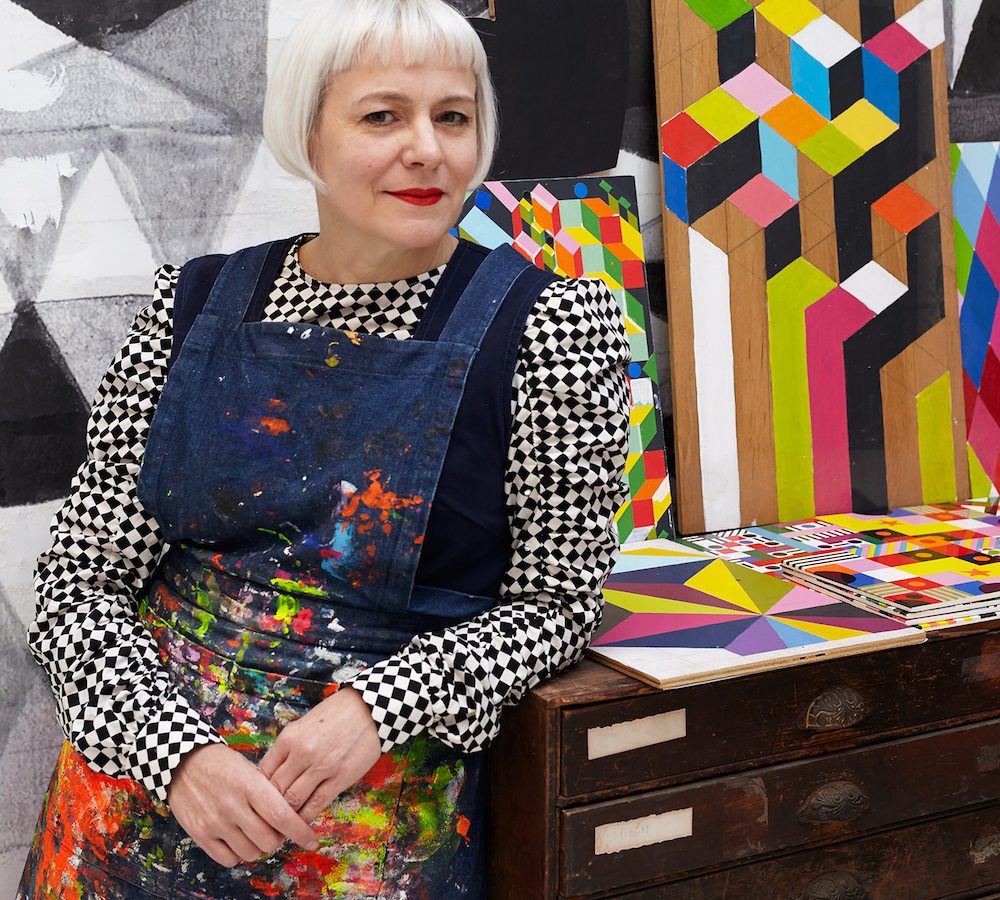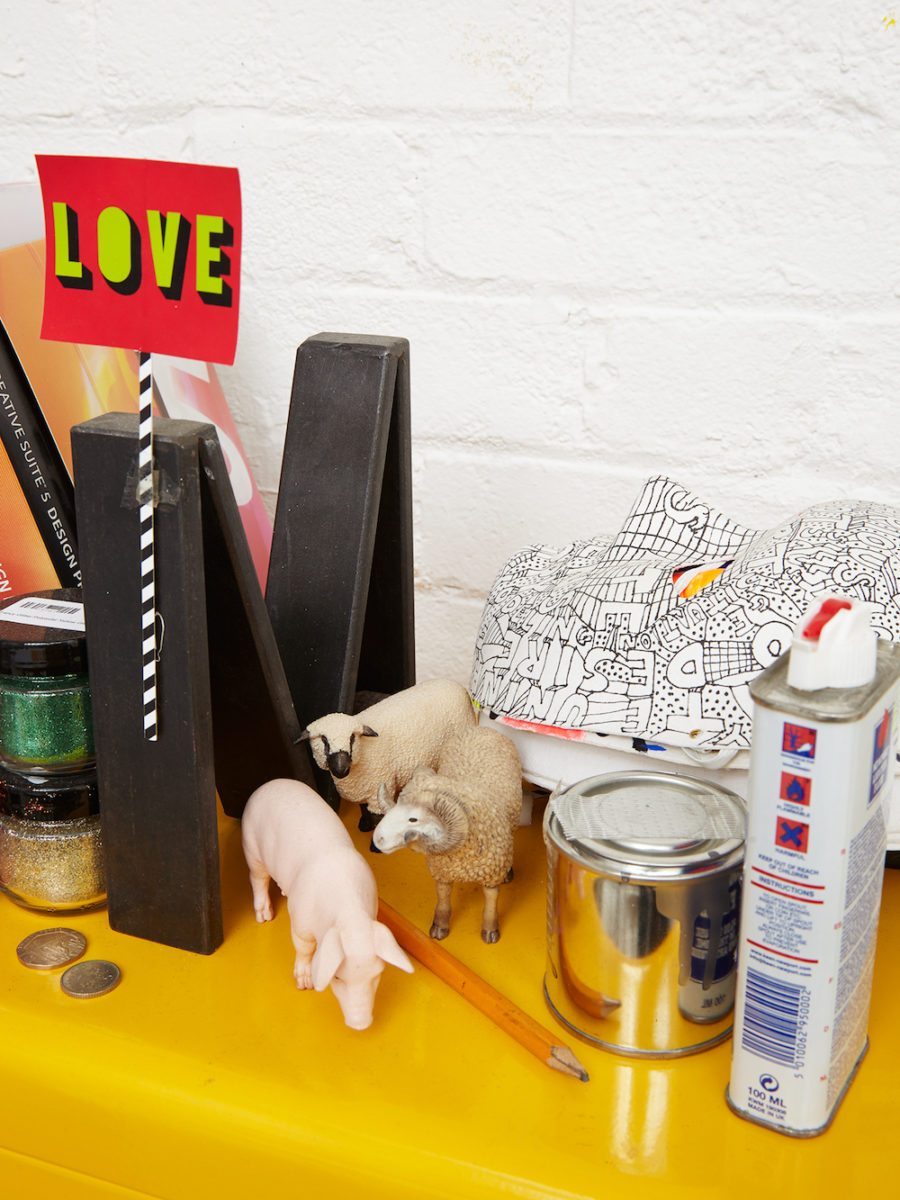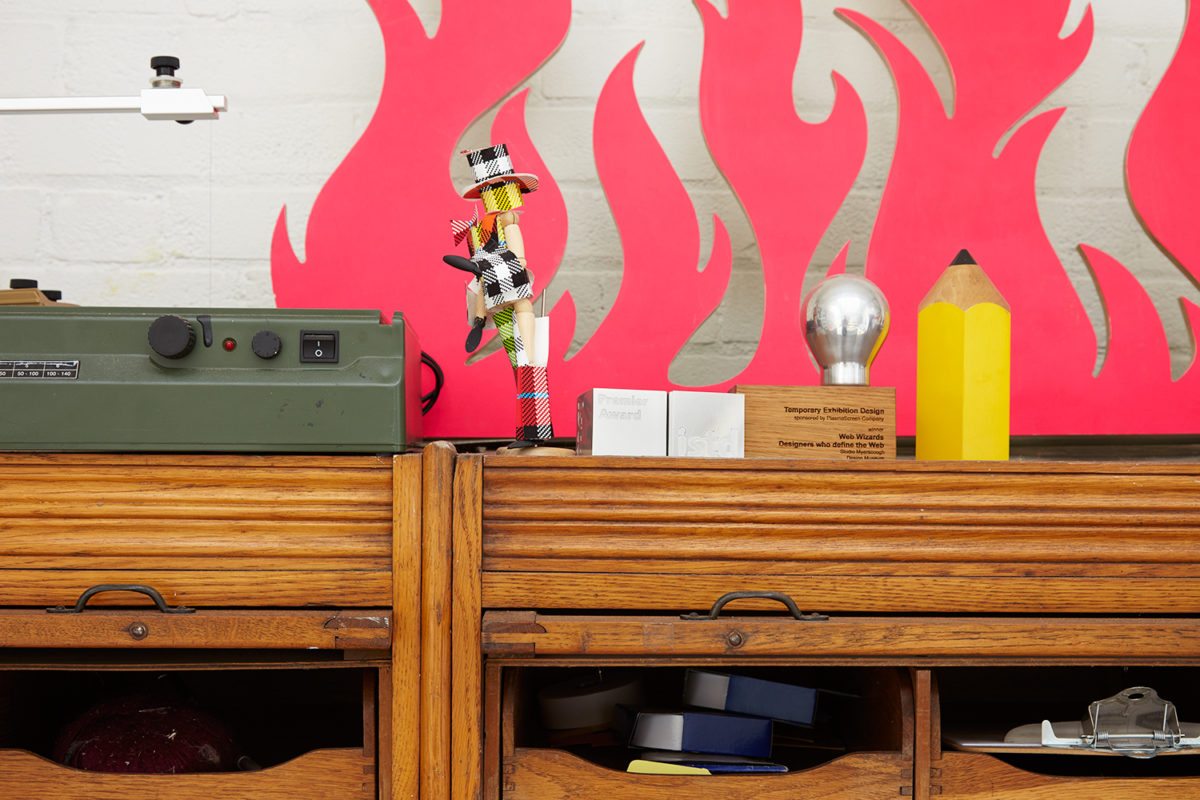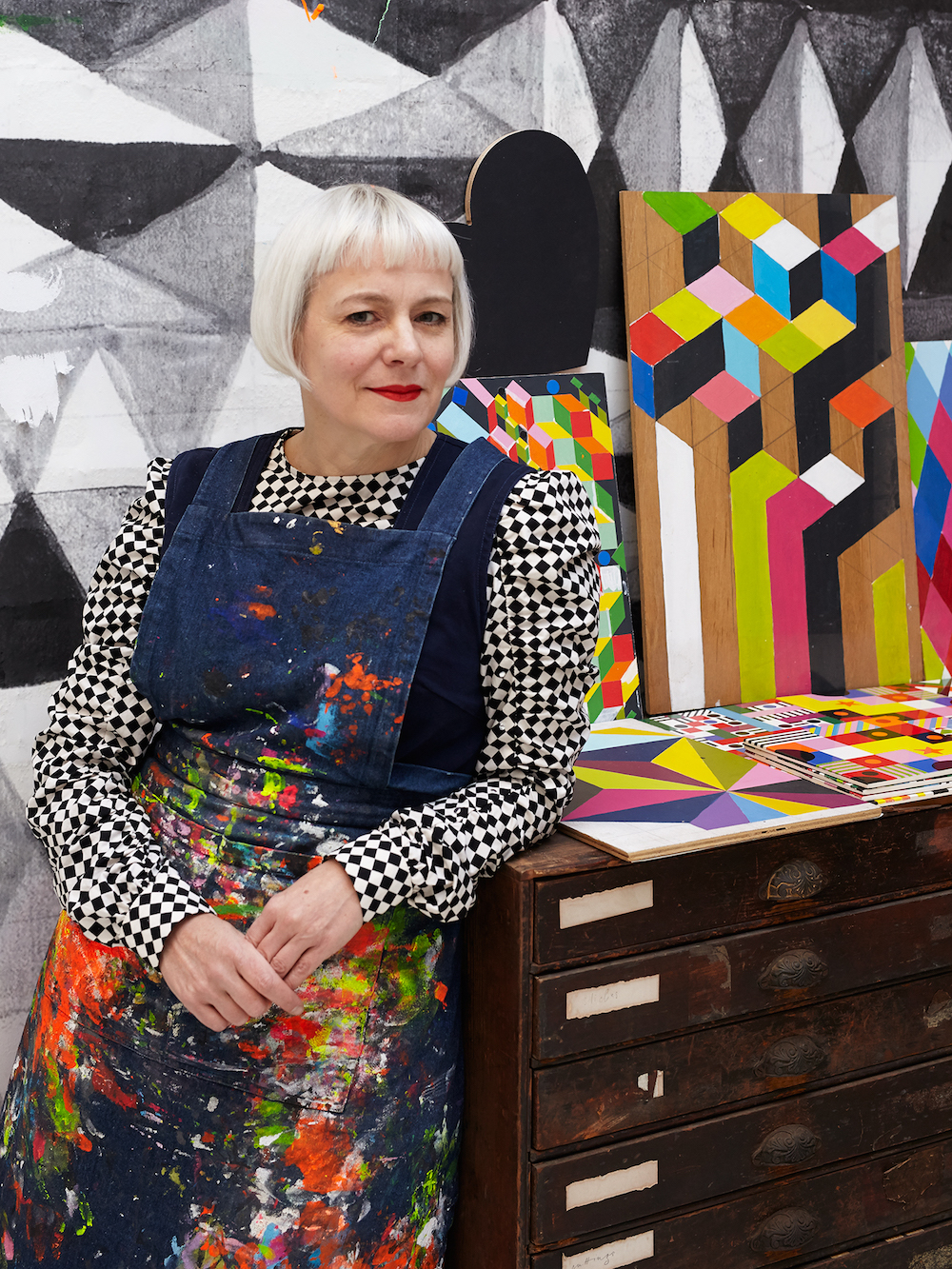 Harking perhaps back to her graphic design education, Morag Myerscough’s work often orchestrates type. Her use of colour: solid, chunky, with a rhythmic click of textile influence. She has caught a moment. Councils, planners, developers and public organizations have requested her input on increasingly larger and bolder projects, from the Deptford Project Café and MVMNT Café to The Bernie Grant Arts Centre Café and The Design Museum in London. Morag has brought her energy and colourful zing to the Sheffield Children’s Hospital, Temple of Agape on London’s Southbank, Zynga in San Francisco and Life is Beautiful festival in Las Vegas, and she is currently working on a commission for a hospital in Sweden.
Harking perhaps back to her graphic design education, Morag Myerscough’s work often orchestrates type. Her use of colour: solid, chunky, with a rhythmic click of textile influence. She has caught a moment. Councils, planners, developers and public organizations have requested her input on increasingly larger and bolder projects, from the Deptford Project Café and MVMNT Café to The Bernie Grant Arts Centre Café and The Design Museum in London. Morag has brought her energy and colourful zing to the Sheffield Children’s Hospital, Temple of Agape on London’s Southbank, Zynga in San Francisco and Life is Beautiful festival in Las Vegas, and she is currently working on a commission for a hospital in Sweden.
She’s been lauded with numerous award nominations including the Design Museum’s Design of the Year. Since I conducted this interview in mid-November, she has been awarded the position of Royal Designer for Industry. I visited Myerscough in her studio in Hoxton, London.
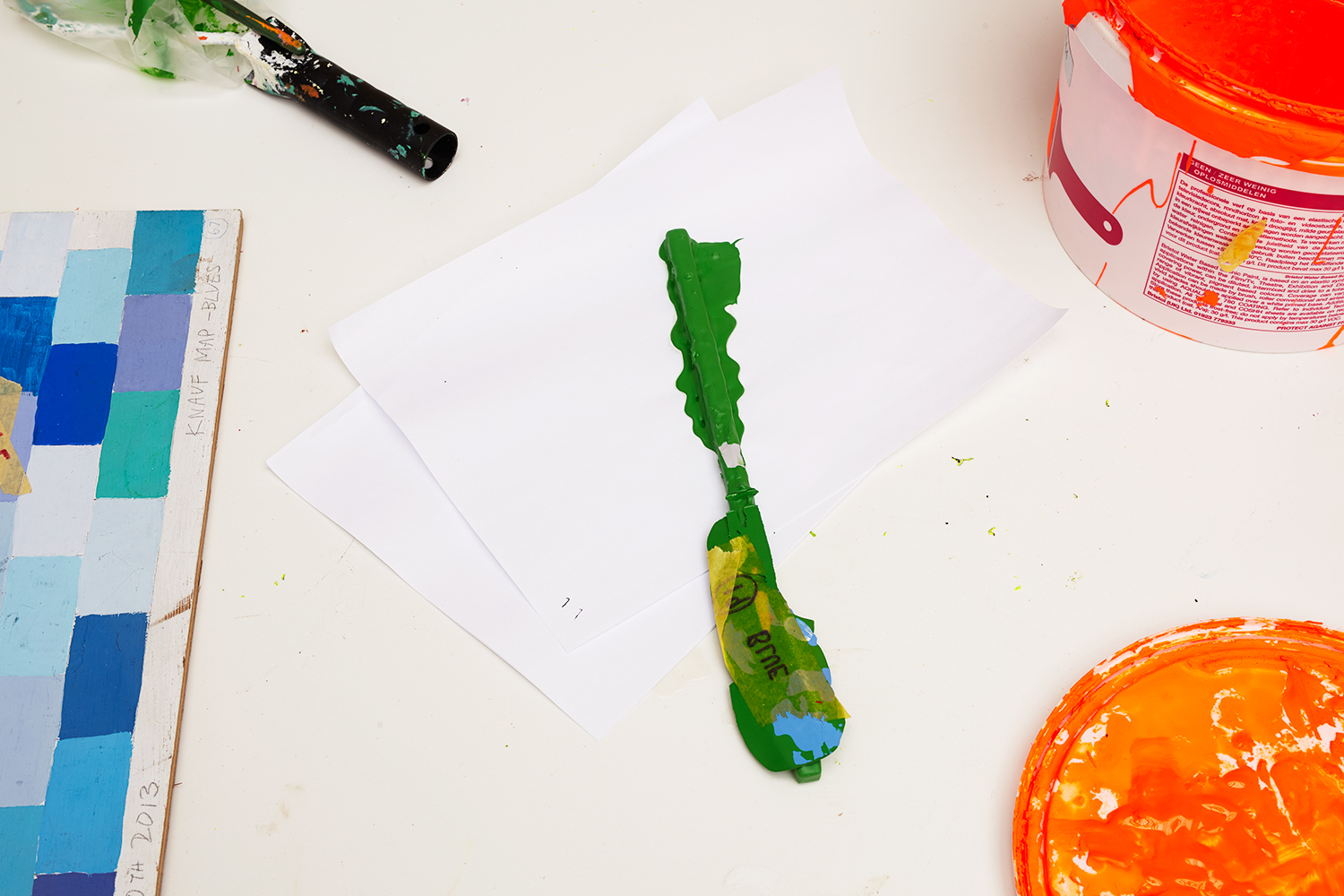
There’s a sort of spatial, sculptural, architectural graphic design thing going on with your work isn’t there?
I think I sit in this space, a place where there are architects and designers and artists. I think you can call yourself whatever you like now. I’m not a graphic designer, illustrator, architect or a sculptor, but maybe I’m all of those things. It’s about mindset and trying to create something for people to feel they are part of. My mantra is the Chinese proverb “Make happy those that are near and those that are far will come”.
How important is working from the studio for you?
We make everything here, it’s quite amazing when it kicks in. This year we built the big piece outside Battersea Power Station and pieces are over at the Barbican Centre at the moment. Last January I put out a message on Instagram for people to come and help me paint, I pay them, and now I’ve got a smaller group who I call. It does have to fit through the doors of the studio but I work with plywood so that’s fine, there are shapes, so we build the work on site and paint the work in the studio in loops. For me, I feel, as a middle child that never had their own space, this is now where I belong. I love this place.
“It’s about mindset and trying to create something for people to feel they are part of.”
Tell me about your Twitter account, I’m disappointed that you’ve started using your account properly, I loved the colours descriptions that you used to tweet…
It ran for three years, I have made a project out of the tweets I created, in Sweden. I’m about to create a 200-metre wall in a hospital, with a year of my mood tweets. One tweet was the colour I felt in the morning, and then I’d tweet out a colour of how I felt at night. It’s a person’s view of the world in colour for a year, colour in triangles merged together.
Your Twitter account was comforting; it was like listening to a colour-based shipping forecast. Are you obsessive about finding colour, is there something you are striving for that you haven’t found yet?
I build big structures and they have to last a certain period of time, I tend to use household paints that will weather. I use Dulux, but I also use Bristol Paints which have really amazing colours, Ultramarine Blue, the blues are really hard, and then obviously my neon, my neon is the main part of my life. I quite like the fact that I use household paints. I think that the way paints work together, the way colours work together, is how you put them together.
How important is the manual production process in your work?
I like having a big project to do. That’s when I get obsessed, totally obsessed. But, I wouldn’t want to do it all the time: it’s manual work. When people come and help it’s paint by numbers. Everything is totally organized, it all has to be signed off, so there’s a lot of time preparing everything. I don’t like repeating things. I do repeat symbols and motifs in my work but I don’t like the idea of repeating projects. I am obsessed with the paint being really flat and the colour to be really deep and the edges being really perfect. People ask why I don’t use vinyl, it’s just that I like doing mechanical things by hand.
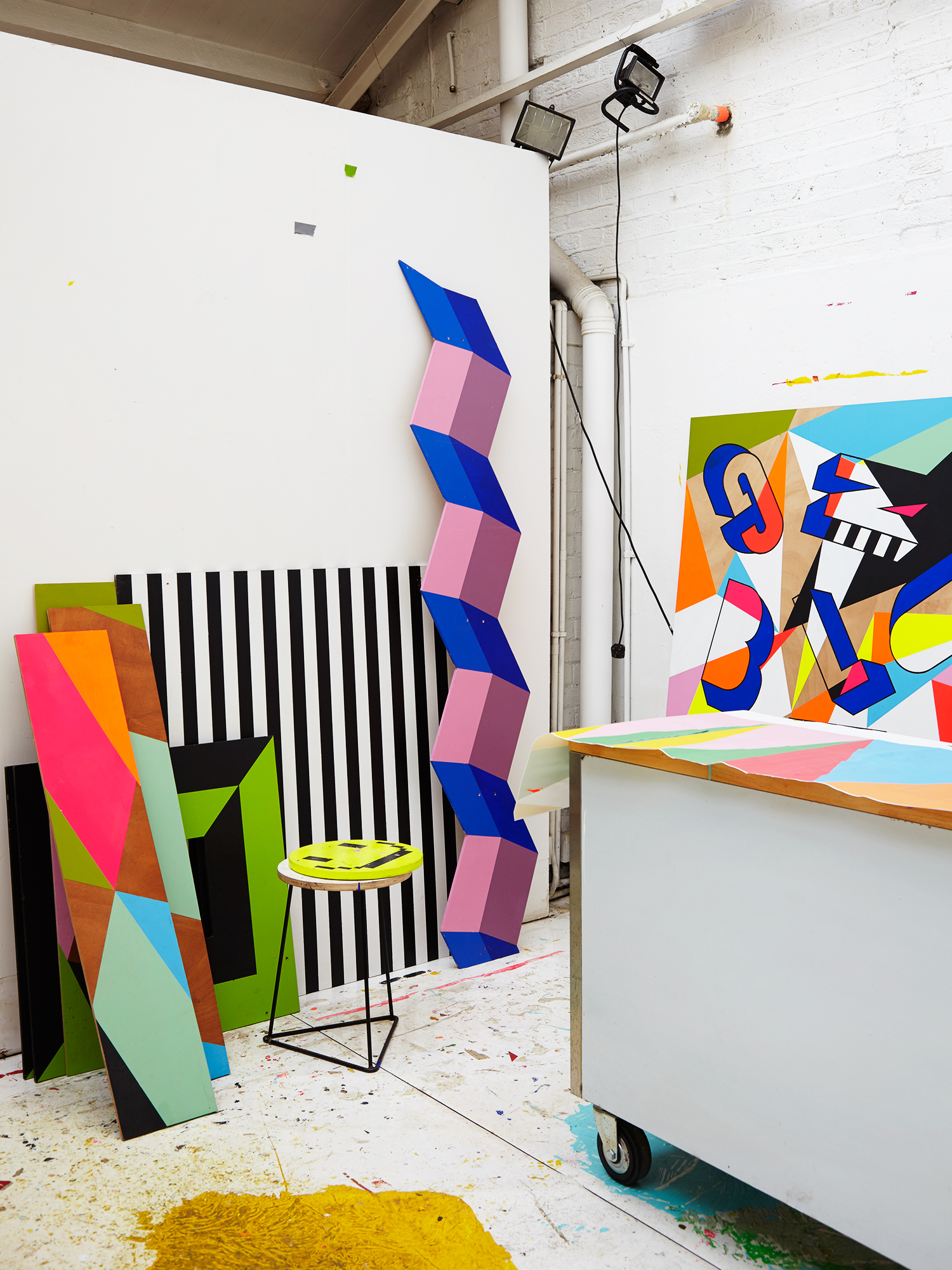
Temporary versus permanent: You’ve got an installation at the Design Museum, and Battersea Power Station is a five-year project. Is there a difference in your outlook between the two?
I think there is, in the people commissioning you, they are more scared when it’s going to be permanent. I try not to have a difference in my head, I think the moment you do there’s a massive weight on your shoulders, you can only try to do something that you believe is good, for that moment in time.
“It’s often about getting people to look at their surroundings in a different way, so it’s not just about surface, it is about working out.”
Do you sell smaller works?
People keep on asking me that. I don’t sell smaller pieces. I’ve made a few bits for charity but I think I’m just so onto the next project, it’s not what I set out to do. I think it’s very flattering that people want to put my pictures on their wall, but I see it that I’m making these big things, they are public. Think public pieces that are free for people to experience in hospitals and schools, or anywhere really, I like it to be outside and I like it being huge, and to work in A4 or A3… I’d find it difficult.
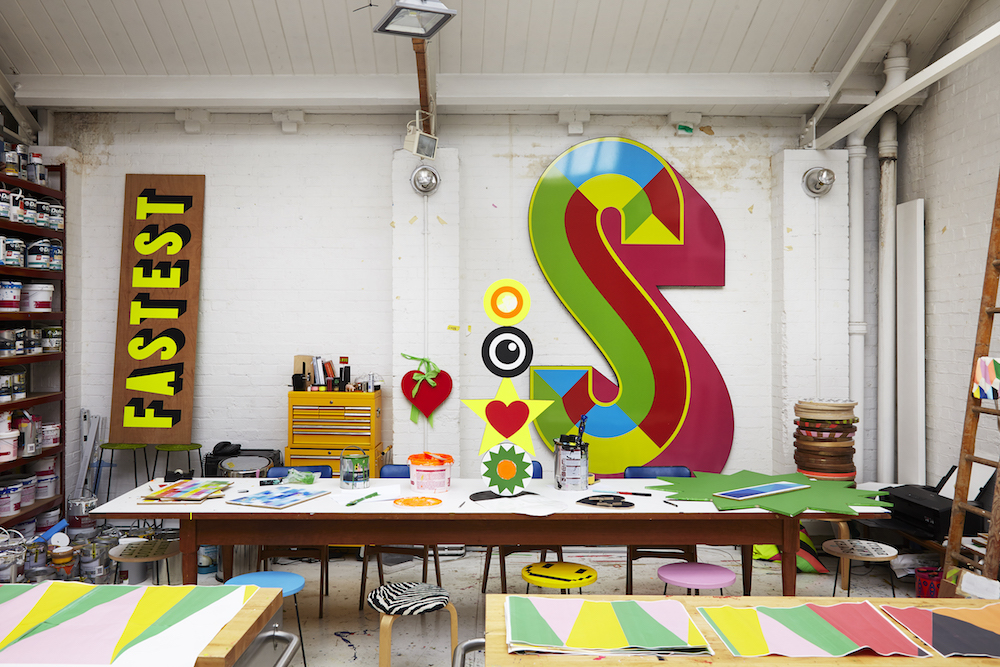
Why does your work have to be so big?
I don’t know why. Because outside is big! If I have a ninety-five-metre wall I can envisage something, I can just about fit something. I just have this thing, maybe because I’ve always lived in London, it used to be so grey, I just see this phenomenal potential. It’s not like I want to paint colour permanently, I just want to spark things off.
There is something of the circus about your work…
Interesting. I do come from a circus family, there is a little bit of a traveller thing, my great-grandfather was a clown and my grandmother was a high-diver, I think we have the nomadic thing. I feel phenomenally flattered if I get permanent commissions, but I don’t want people to get tired of it. In the right situation, what I love to do is a full building, of some form, but it should last as long as it is relevant.
Maybe I should have a big sort of gipsy encampment, a bit like the neon graveyard in Las Vegas, where people could come and take away bits of my old work.

So we’re not going to see your work in an art gallery?
I never say never, nobody has asked me as such. I’d like to do some installations, I like the idea of an internal space that I could do something with. I hope that the work that I do is thinking from the inside, it’s often about getting people to look at their surroundings in a different way, so it’s not just about surface, it is about working out. I would hope that the work that I do is based on the idea of: Can you make work that people feel they belong to. Can you give that work to them and they own it? I’m forever searching for the best solution. For me, the most important thing is to make a piece of work and walk away from it.
